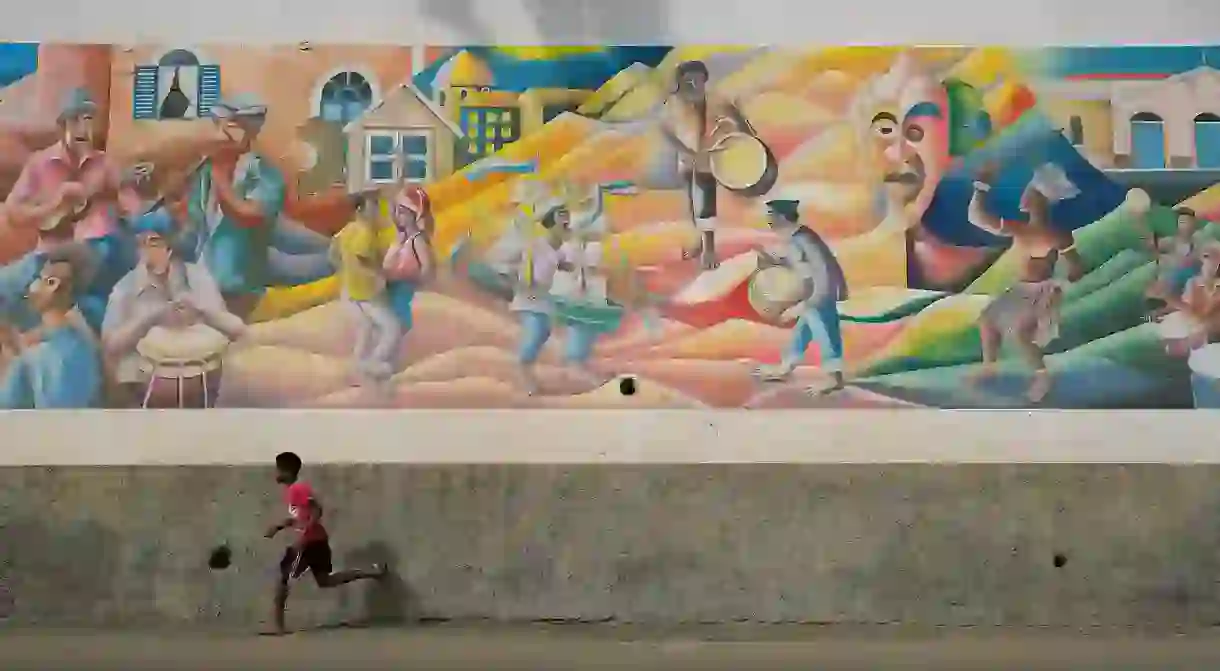Why Cape Verde Is More Than Just a Beautiful Beach Destination

Cape Verde’s moon-like islands are often associated with winter sun and package holidays. Located in the Atlantic Ocean, the island country is home to world-class beaches and rich heritage, making it an ideal travel destination with a mix of art, culture and beautiful landscapes.
Hike through volcanic landscapes

Like the Canaries, Cape Verde is a cluster of volcanic islands that rose out of the Atlantic Ocean millions of years ago. This means that, along with the famous sandy beaches and rugged coastlines, you’ll find peaks and valleys that provide exciting hiking opportunities. The island has such a diverse landscape that you can walk among lush vegetation, white sand dunes, banana plantations and parched deserts. For unbeatable mountainous views, head to the Serra Malagueta range on Santiago Island or Valle de Paúl on Santo Antão to look out over dramatic craters.
Learn about the fascinating and dark history

The uninhabited Cape Verdean islands were discovered by Portuguese settlers in 1456, and quickly became a station on the transatlantic slave trade. Portuguese control continued until 1975, and the horrors of this regime can be explored at the Tarrafal Concentration Camp. For a lesson in fascinating Cape Verdean history, visit the museum that tells you the story of its past. Central to the struggle for independence was the Bissau-Guinean and Cape Verdean freedom fighter Amilcar Cabral, who is remembered in a museum in the capital of Praia. To learn about the local history, visit the Museu Municipal in the historic centre of São Filipe. Or pay a visit to the Museo do Mar in Mindelo, which is located inside the historical landmark Torre de Belem, to learn about the influence of the sea on the development of these islands.
Go island-hopping

Sal and Boa Vista are home to the majority of the big resorts in Cape Verde. But island-hopping is a great way to make the most out of your trip, as you’ll get to see more of the country. Accessing each of Cape Verde’s 10 islands is easy. Hop on a ferry or a plane, and you’ll be able to enjoy a new island in 30 minutes or less. With each of the islands offering unique sights and things to do, spend a day or more exploring the beauty of each picturesque isle. The journey can be just as enjoyable as the destination – you’ll get postcard views from the sea if you choose to sail into your next port of call.
Indulge in fresh Creole cuisine

Cape Verde’s heritage is a mix of Portuguese, Brazilian and West African, which has influenced its unique cuisine. The national dish of cachupa is a must-try. A hearty combination of beans, corn, cassava, sweet potatoes and either meat or fish, the stew is a popular dish amongst locals. And while the basic ingredients stay the same, each area in the country has its own take on the classic. If you’re unable to finish the stew, have it the next day, since leftovers are often fried and served with an egg for breakfast. Delicious fish is also in abundance – sawfish and grouper are often caught and then grilled right on the beach – offering the unbeatable taste of fresh food. Wash it all down with wine from Chã das Caldeiras on Fogo Island – the only place in Cape Verde that grows grapes.
Listen to morna, the music of Cape Verde

Morna – a genre of music originating in Cape Verde – is known for its distinctive rhythmic structure and languid melodies. The genre’s most famous performer was Cesaria Evora, who began her career singing in bars in the city of Mindelo, on São Vincente Island. She died in 2011, but not before earning a Grammy for her work in 2004 and even having Mindelo’s international airport named after her. Learn about Cape Verdean culture and the late diva’s legacy at a local bar where morna bands play to festive crowds of locals and tourists. Whilst there, try a glass of Strela, Cape Verde’s beer, or sip on Grogue, a strong rum and the country’s national drink.
See the marine life

Thanks to its ideal location, a few hundred kilometres off the West Coast of the African continent, Cape Verde has cultivated a rich ecosystem, especially in its waters. Take a boat trip to see large marine mammals such as humpback whales and dolphins swimming alongside your vessel, or do some diving amongst tropical fish and shipwrecks. If you visit between September and December, you might be lucky enough to see nesting turtles. Eggs are laid on the beaches around the islands, and when the babies hatch they make their way down to the water.
It has perfect weather all year round

No matter when you visit Cape Verde, you can expect to be met with tropical weather throughout the year. The temperature tends to fluctuate between 24 and 30 degrees Celsius (24F-86F) but, despite the heat, humidity usually remains low. Pick a time that suits you, whether that’s the height of summer or Christmas time, and enjoy gloriously sunny days with hardly any rain at all.













